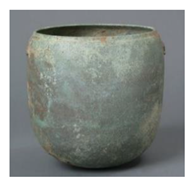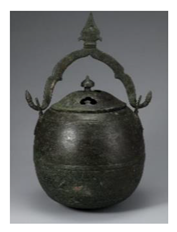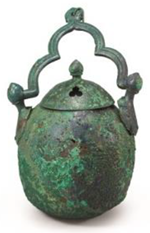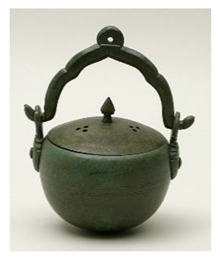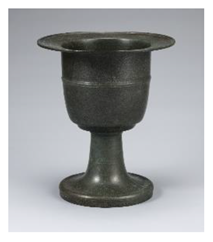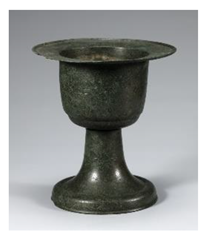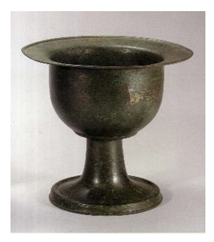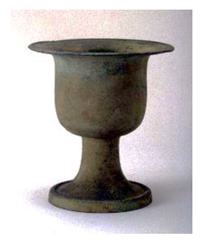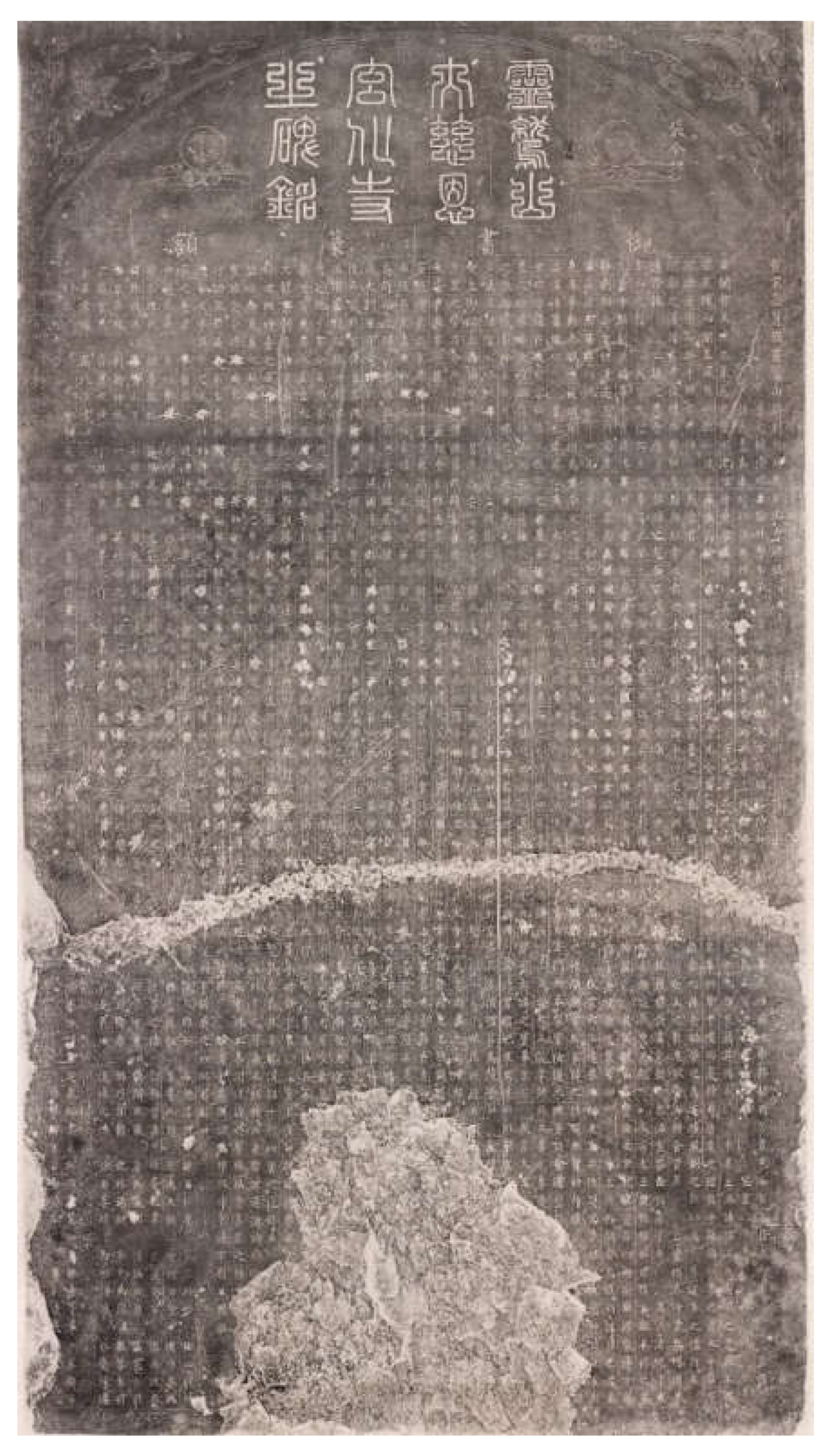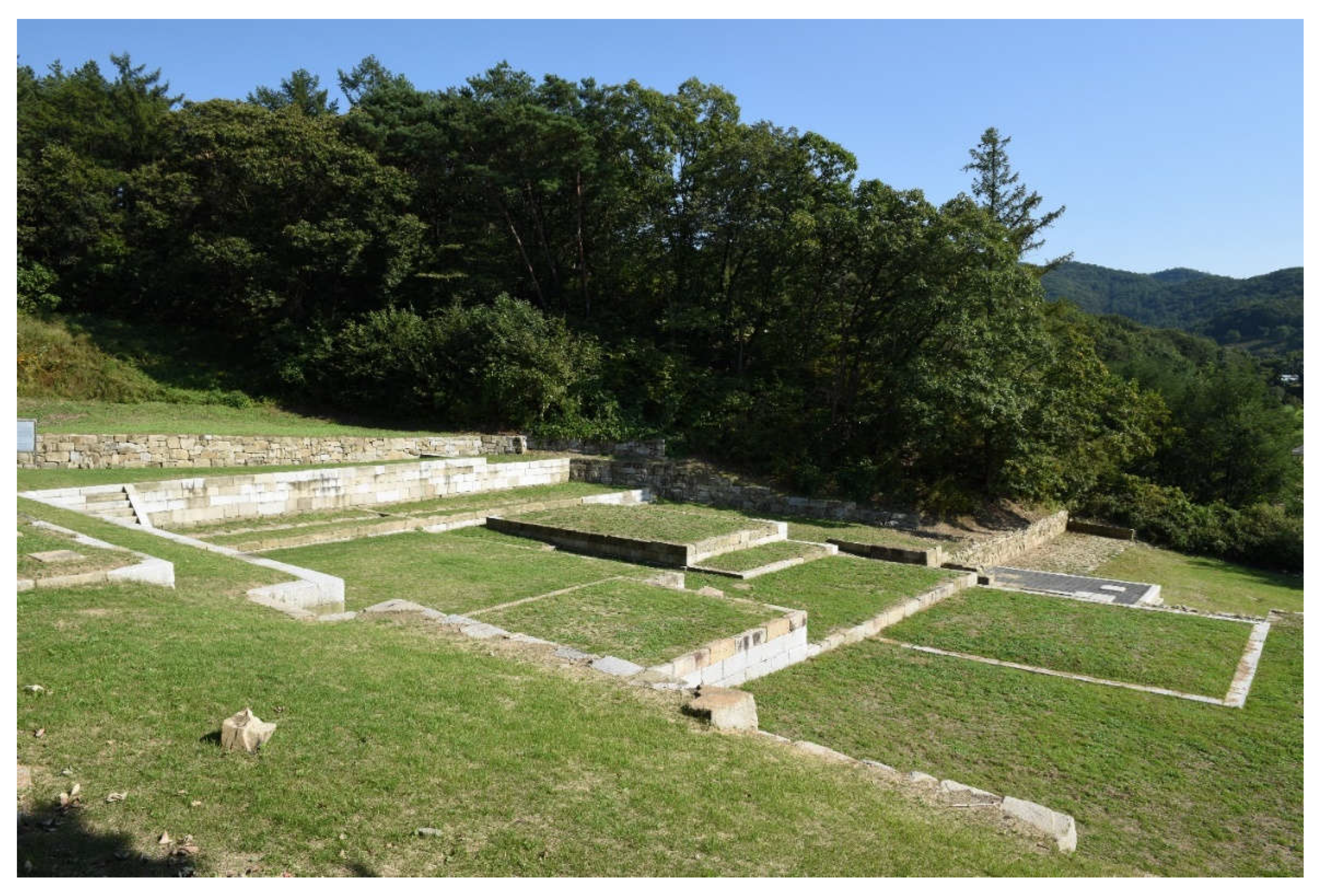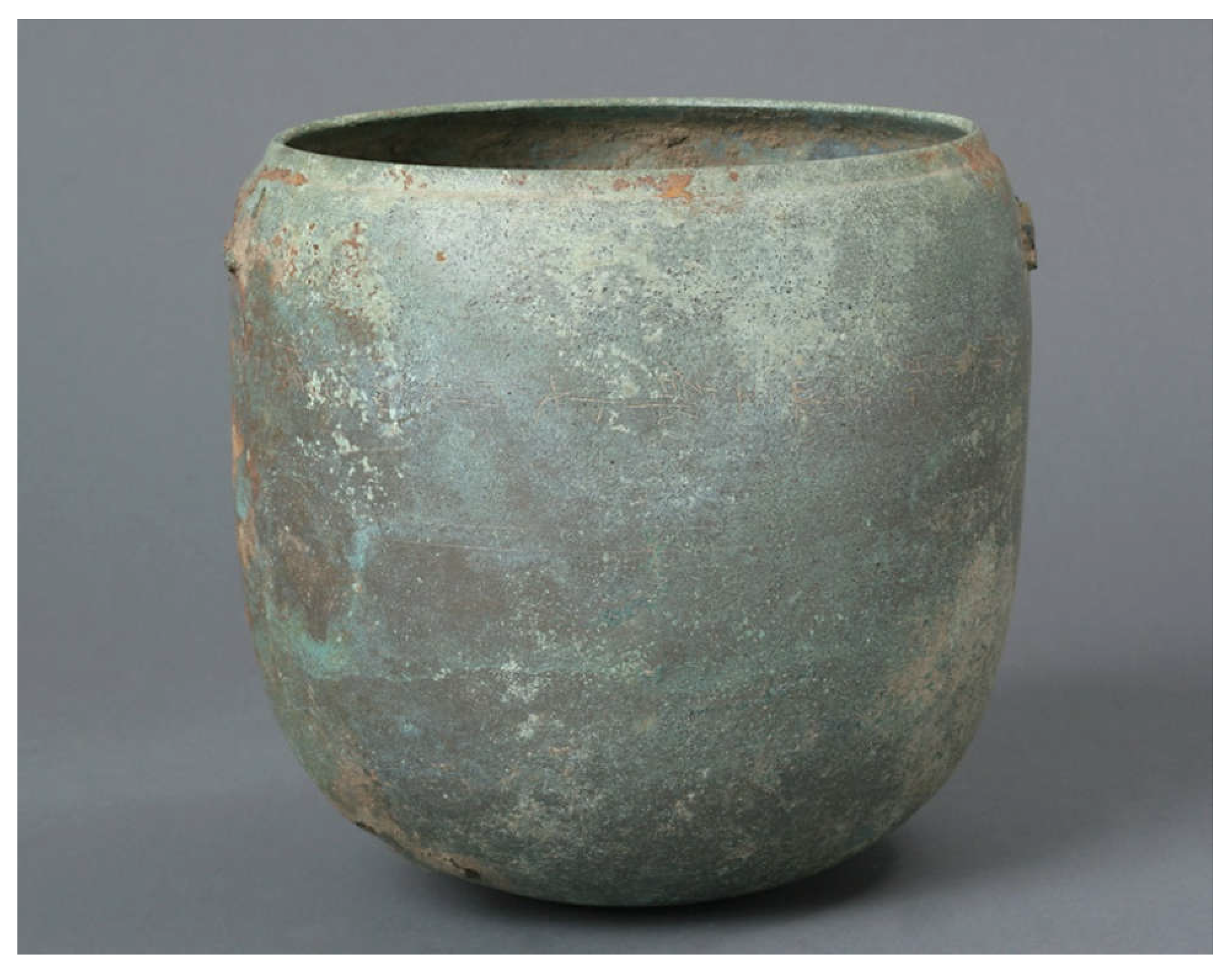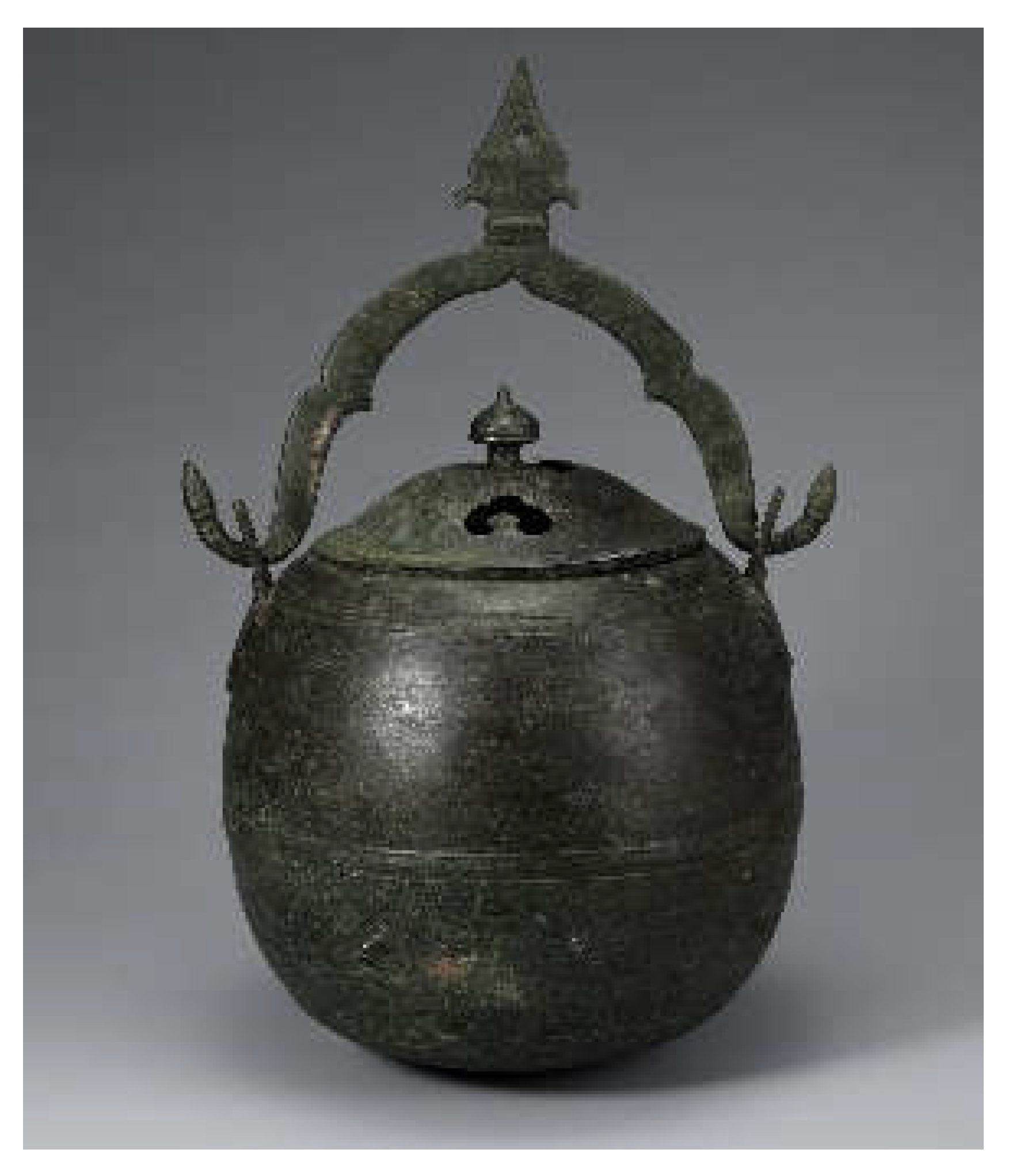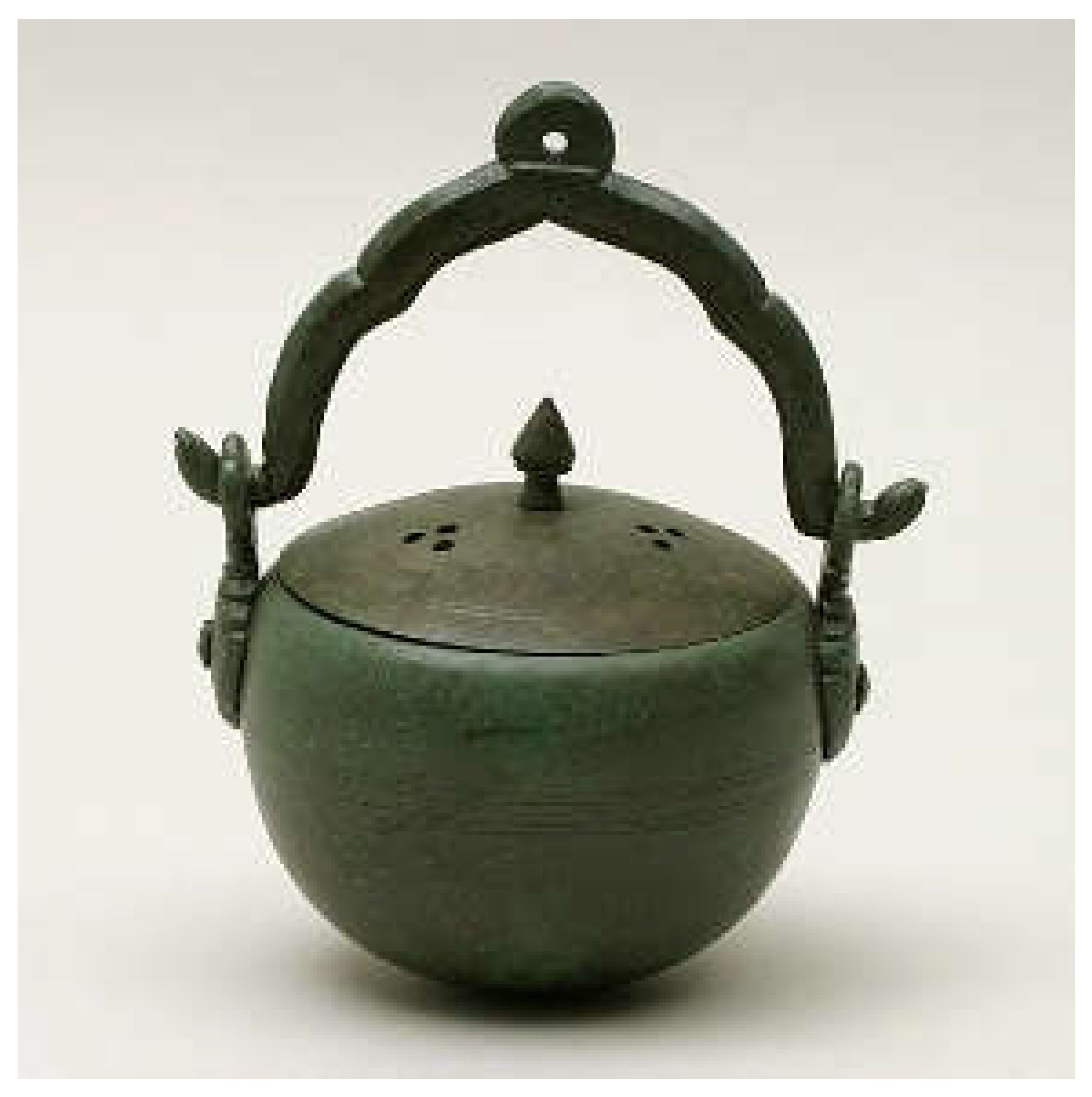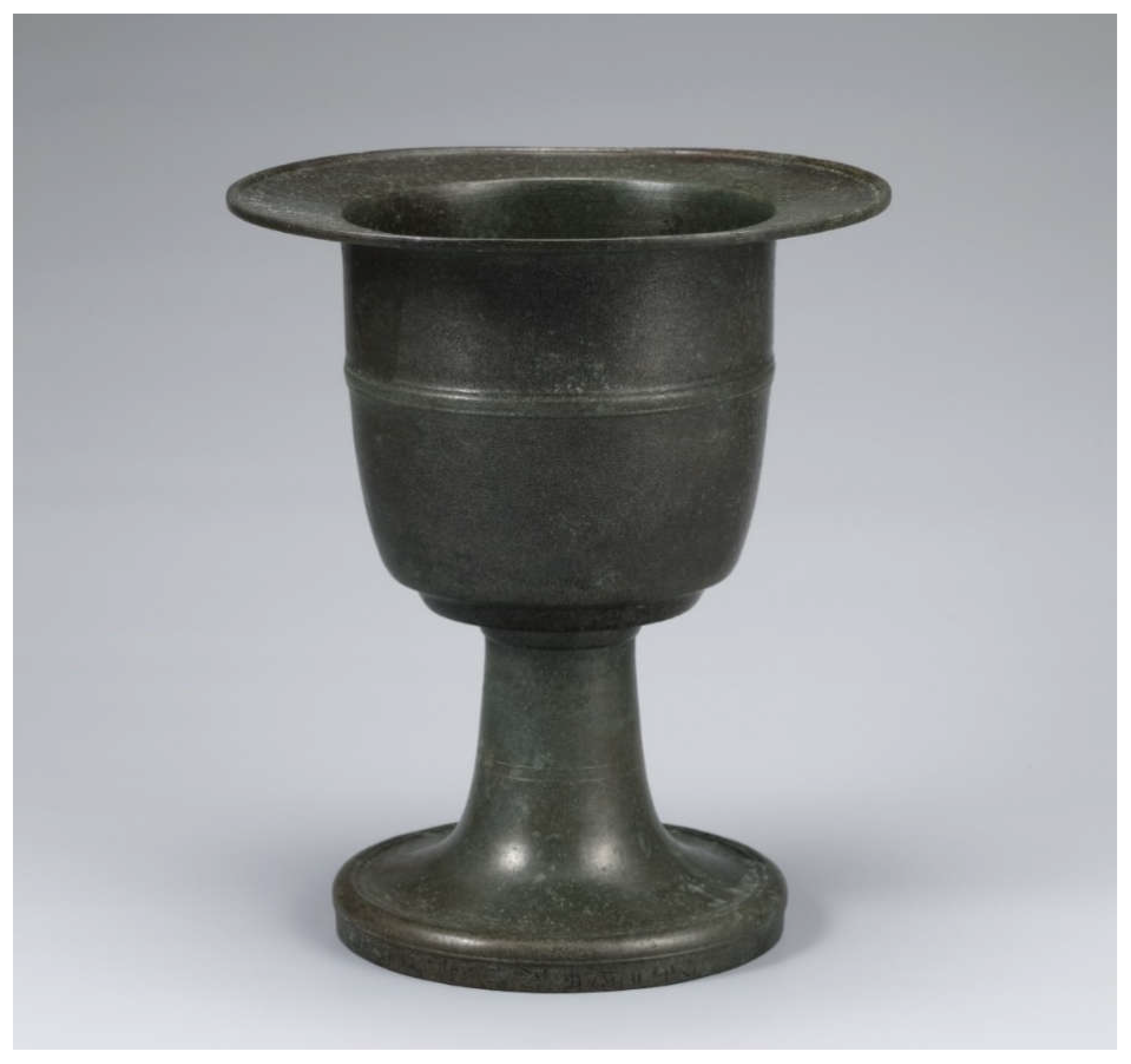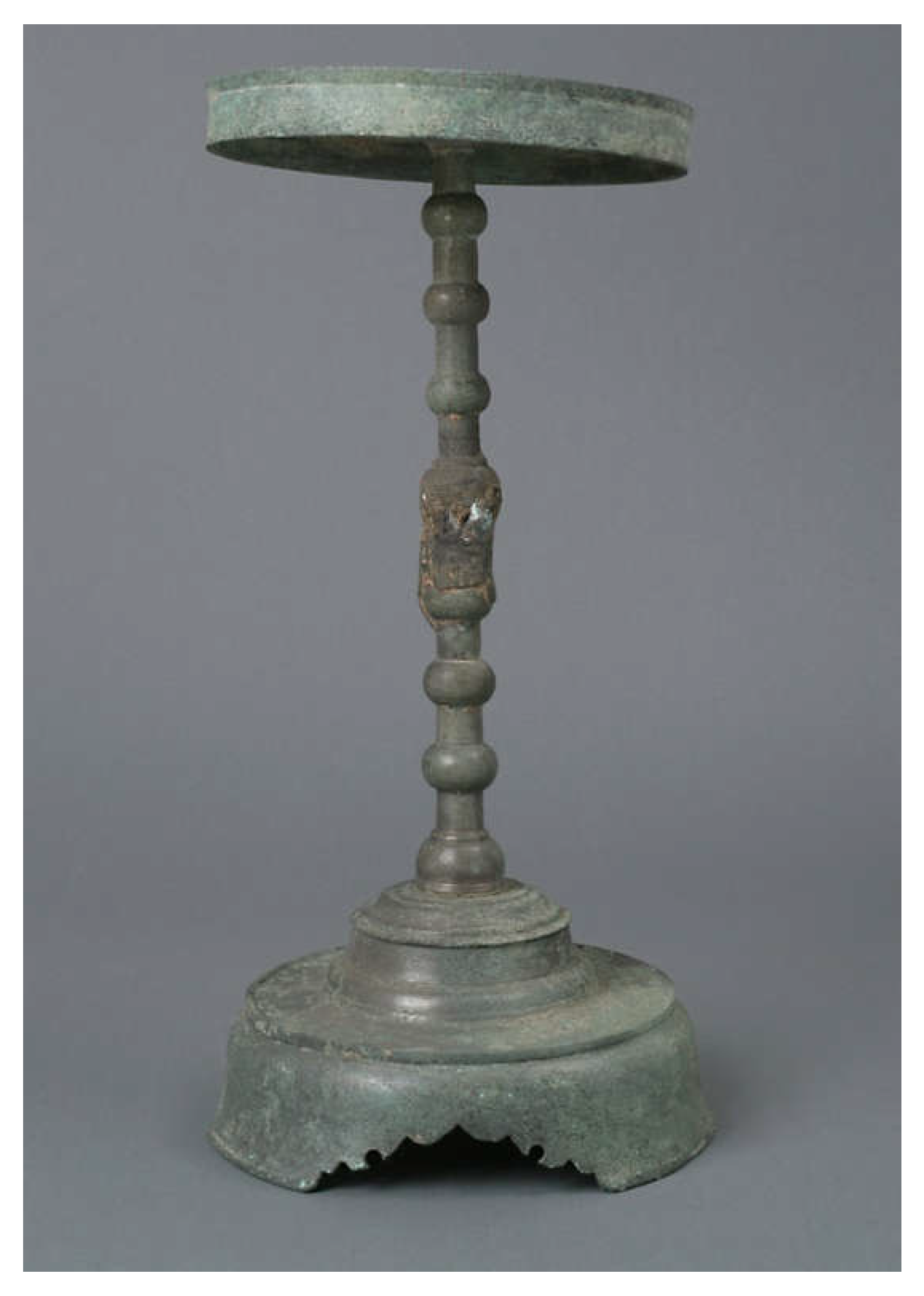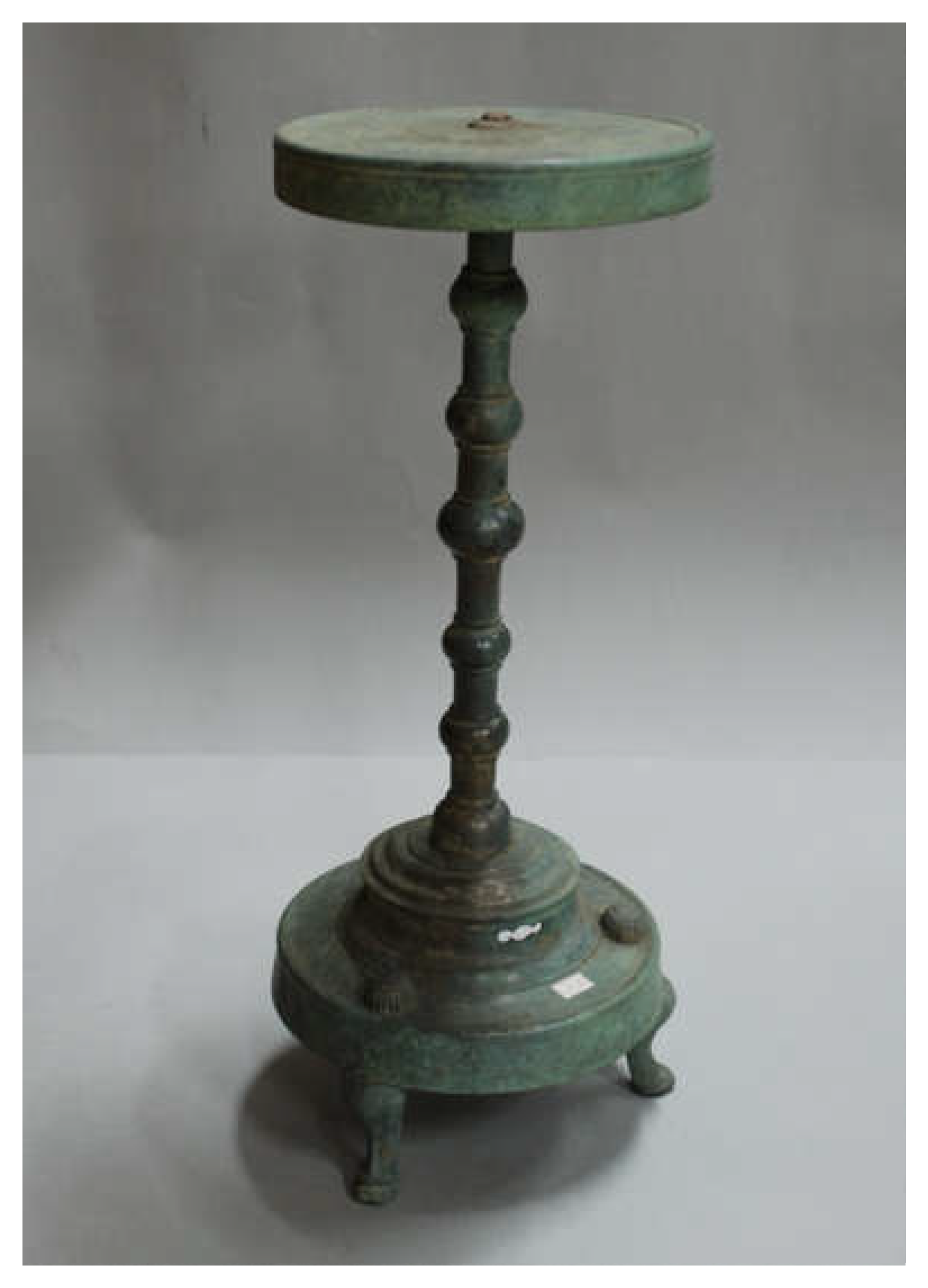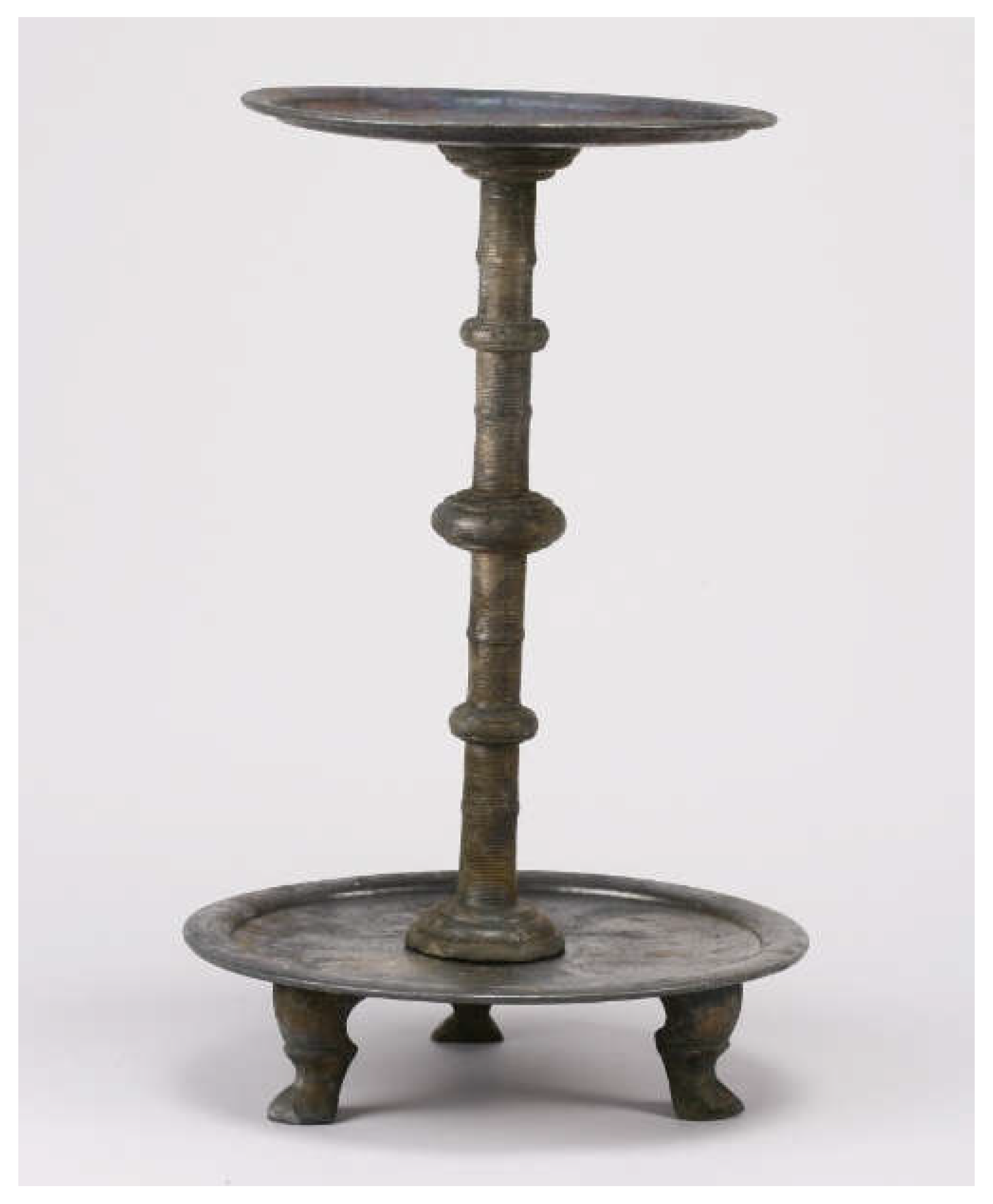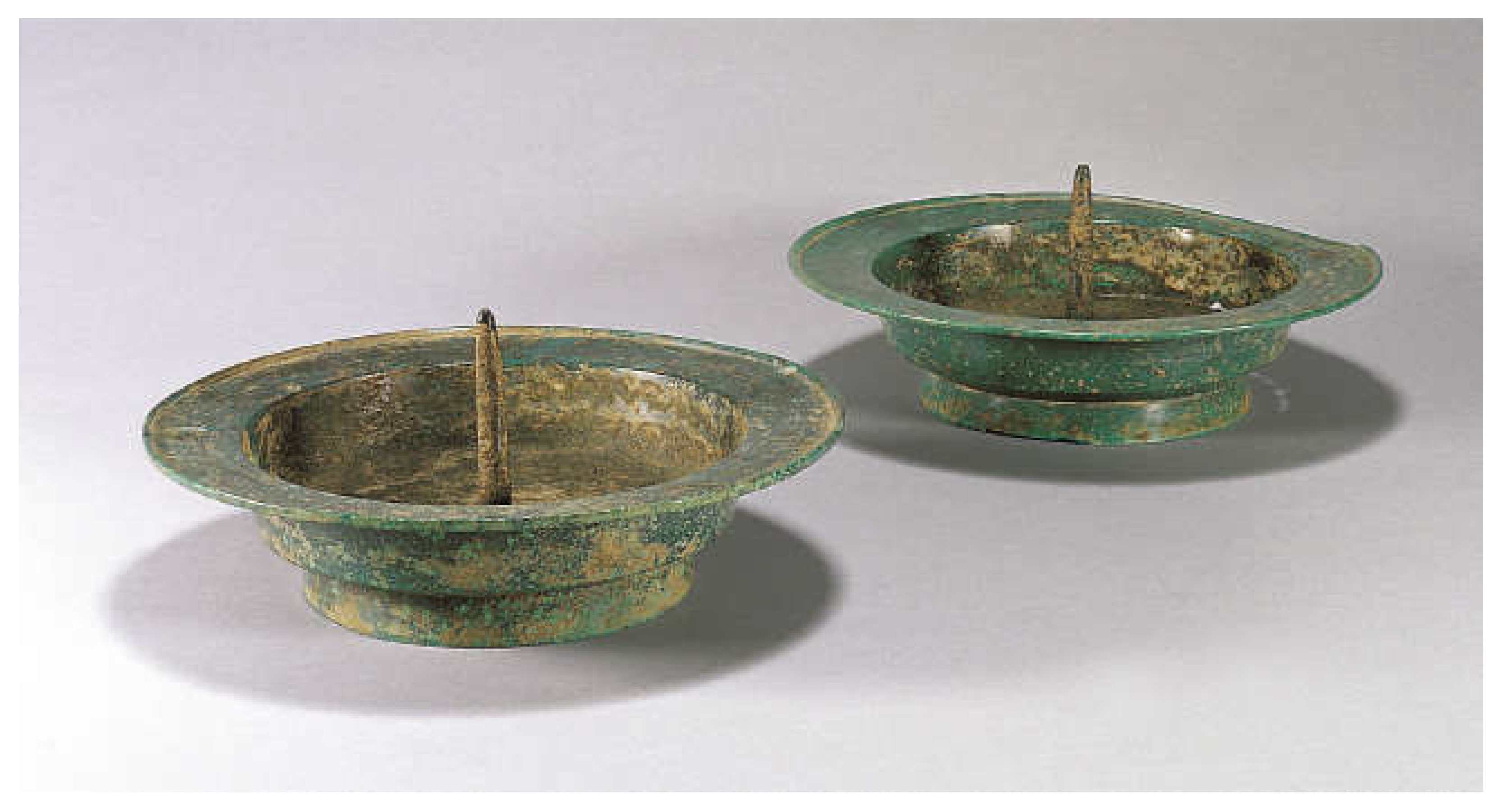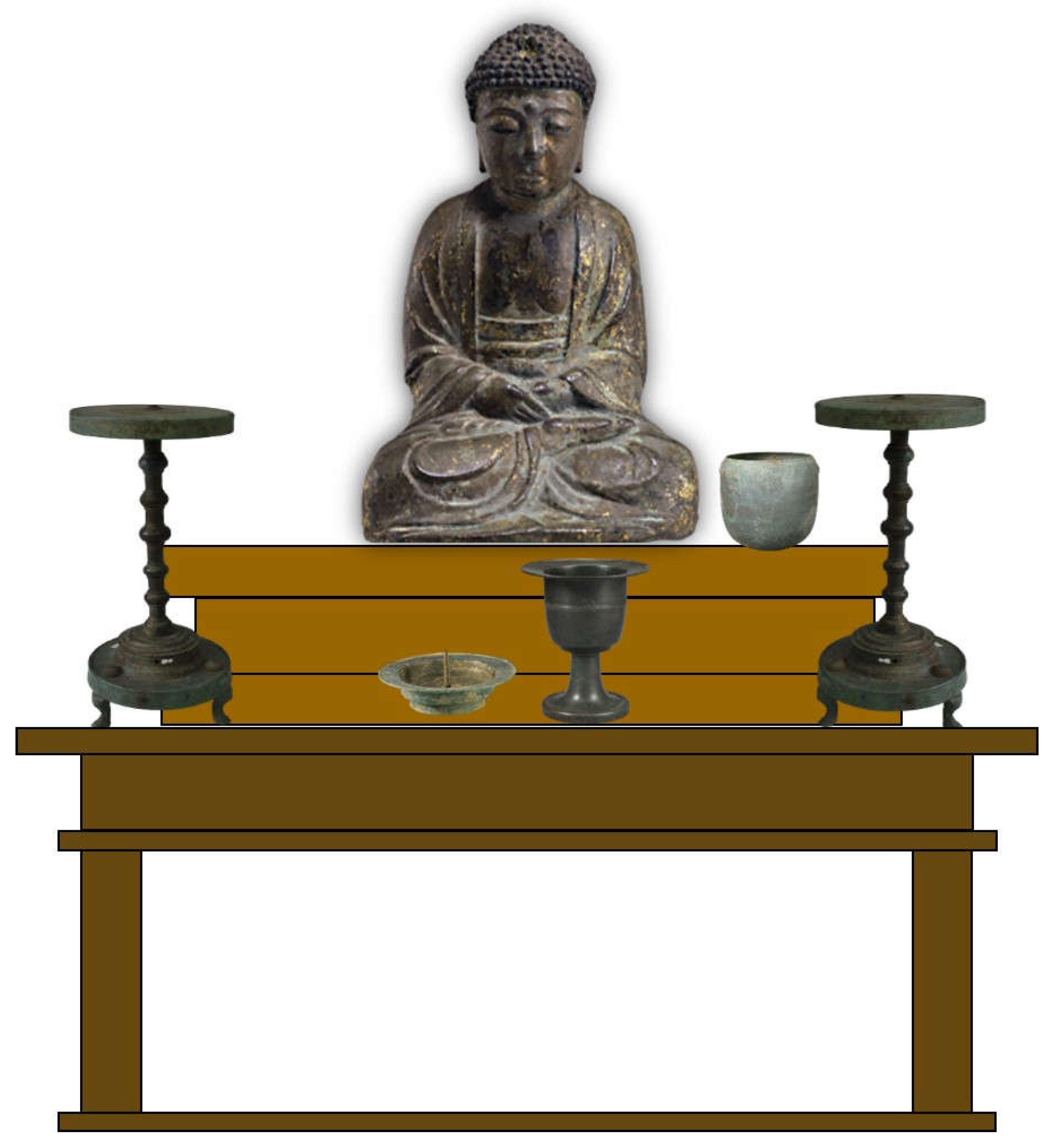1. Introduction
Buddhism was the state religion during the Koryǒ period (CE 918-1392), and various Buddhist rituals were held during that period. According to Yongjaech'onghwa 慵齋叢話1 written by Sŏng Hyŏn 成俔 (1439-1504), an official of the early Chosŏn period, “The royal palace and big house were connected each other, King and his wife visit temple vicinity of the palace and he burned incense without stopping.”2 This record describes a ritual iconic of the Buddhist rituals that were held during the Koryo.
Amitābha Buddha, who presides over the Western Paradise, has historically been a favored deity, given the easy promise of salvation and entry into his paradise, and was especially popular in the Koryǒ period. Amitābha Buddha had been enshrined in the form of a triad representing Amitābha Buddha, Avalokitesvara, and Mahasibamaprata Bodhisattvas in Amitābha hall and related buildings. Showing the popularity of Amitābha belief, the Amitābha Dharma Assembly was held during the Koryǒ period. The present study examines the Amitābha Dharma Assembly held at the Pŏpch'ŏnsa temple. In Muja year, the Amitābha Dharma Assembly called Mit'ahoe 彌陀會 was held in the Amitābha hall of the Pŏpch'ŏnsa 法泉寺3 temple located in Puron-myŏn, Wŏnju-city, Kangwŏn-do Province. Monks who lived in the Pŏpch'ŏnsa temple prepared a lot of bronze offering utensils to be used in this Dharma Assembly. The bronze offering utensils that monks prepared for Mit'ahoe were discovered after 800 years. This article demonstrates what kind of bronze offering utensils were made and when they were made.
2. The Record of the Amitābha Dharma Assembly of the Koryǒ Period
“Mit'ahoe” means Amitābha Dharma Assembly. During the Koryǒ period, many Mit'ahoe must have been held because of the popularity of the Amitābha belief. However, the record of the Koryǒ period related to Mit'ahoe is sparse. Mit'ahoe of the Koryǒ period were held in Pǒpsangjong 法相宗
4 temples like the Hyǒnhwasa temple 玄化寺
5 and the Pǒpcheonsa temple. According to the
Hyǒnhwasa temple Monument 玄化寺碑 (
Figure 1), King Hyǒnjong (r 1009-1031) ordered the building of the Hyǒnhwasa temple to pray for the repose of his parents’ souls, to enshrine portraits of the deceased, and to hold a Mit'ahoe for three days. The record of the
Hyǒnhwasa temple Monument is the oldest record related to Mit'ahoe of the Koryǒ period. The purpose of holding Mit'ahoe is clearly stated in the
Hyǒnhwasa temple Monument as being to pray for the repose of his parents’ souls, but the process of Mit'ahoe is not stated.
Another record on Mit'ahoe from the inscription on the bronze offering utensils excavated at the Pŏpch'ŏnsa temple site is shown in
Figure 2.
Bronze offering utensils excavated at the Pŏpch'ŏnsa temple site were engraved with an inscription such as; “In February of the Muja 戊子 year, it is said that offering utensils were made to be used for the Mit'ahoe of the Pŏpch'ŏnsa temple.” However, the purpose and the process of Mit'ahoe' are not stated. Mit'ahoe of the late Koryǒ period seemed to be expanded to the Sŏnjong 禪宗. In the works of Yi Gok 李穀 (1298-1351), who was a scholar of the late Koryǒ period, Mit'ahoe 彌陀會 that was held in Pobŏpsa 報法寺 was recorded.6 As mentioned above, Mit'ahoe were held in the Pǒpsangjong temple and the Sŏnjong temple during the Koryǒ period. In the Mit'ahoe, the Amitabha Triad, Amitābha Buddha, Avalokitesvara, and Mahasibamaprata bodhisattvas would have been enshrined in the Amitābha hall or other Buddhist halls, and various bronze offering utensils would have been placed in front of Amitābha Triad. Then, what kinds of Buddhist offering utensils would have been placed in Mit'ahoe during the Koryǒ dynasty?
3. Bronze Offering Utensils for Mit'ahoe of the Pŏpch'ŏnsa Temple Held in Muja Year
In the 1960-70s, various bronze offering utensils were founded at the Pŏpch'ŏnsa temple site. The excavating relics include bronze hyangwan香垸 (incense burner), bronze hyŏn-lo 懸爐 (hanging incense burner), bronze kwangmyŏngdae光明臺 (light stand), and bronze pŏn 燔 (candle stick), with an inscription engraved on each bronze offering utensil (Lee 2012).
3.1. Inscription on the Bronze Offering Utensils for Mit'ahoe
The bronze hyŏnlo懸爐 (hanging incense burner) excavated at the Pŏpch'ŏnsa temple site has an inscription that translates as follows: “In February of the Muja year five monks including Shinhoe 信懷 made three bronze hyŏnlos for Mit'ahoe held in Pŏpch'ŏnsa, and enshrined in front of Mit'ahoe” (Hwang 1966). 7 According to this inscription, it was made for use in the Mit'ahoe held at the Pŏpch'ŏnsa temple in the Muja year. The inscription also relates that five monks including the Monk Shinhoe 信懷 (date unknown) made three hanging incense burners. The reason why five monks made three new bronze hyŏnlos was for them to be enshrined in front of Amitabha Triad, Amitābha Buddha, Avalokitesvara, and Mahasibamaprata bodhisattvas of the Pŏpch'ŏnsa temple.
The bronze hyangwan excavated at the Pŏpch'ŏnsa temple site is engraved with an inscription that read: “In February of the Muja year five monks including Shinhoe 信懷 made three bronze hyangwans which were placed in front of Amitābha Buddha, weight is 11 kŭn 斤 (Committee for the Compilation of the Anthology of Hwang Sooyoung 1999).8 According to this inscription, five monks, including the Monk Shinhoe 信懷 made three bronze hyangwans to be enshrined in front of Amitābha Buddha. Unlike the inscription of the bronze hyŏnlo, this did not state the name of the temple or the name of the Mit'ahoe.
There are two types of bronze kwangmyŏngdae (light stands) that were excavated at the Pŏpch'ŏnsa temple: a big bronze kwangmyŏngdae and a small bronze kwangmyŏngdae. The big one is in a collection at the Handok Museum, and the small one is in a collection at the Dongguk University Museum. The inscription engraved on the big bronze kwangmyŏngdae is as follows: “In February of the Muja year twenty-two kwangmyŏngdae are enshrined in front of Amitābha Buddha of the Pŏpch'ŏnsa temple. Of twenty-two bronze kwangmyŏngdaes, three are large. Monk Shinhoe 信懷, Hyegyŏn 惠堅, Chŭkkang 則岡, Kyŏngshin 景申, and Imun 里文 make this bronze kwangmyŏngdaes, and the weight is 84 kun 3 ryang” (Committee for the Compilation of the Anthology of Hwang Sooyoung, 1999).9 The bronze kwangmyŏngdae in the Dongguk University Museum has an inscription that reads: “In February of the Muja year, twenty-three bronze kwangmyŏngdaes are enshrined in front of Amitābha Buddha. Of twenty-three bronze kwangmyŏngdaes, three are large. Five monks including Shinhoe make bronze kwangmyŏngdae and they are enshrined in front of Amitābha Buddha, the weight is 72 kun 8 ryang” (Heo 1984). 10 The inscription tells that forty-five bronze kwangmyŏngdaes were made by five monks. Of the forty-five light stands, six large bronze kwangmyŏngdaes would be enshrined in front of Amitābha Triad.
Another offering utensil, the pŏn 燔, has an inscription like this; “In March of the Muja year five monks including Shinhoe made three pŏns, they are enshrined in front of Amitābha Buddha of the Pŏpch'ŏnsa temple. The weight is 1 kun 12 ryang” (Heo 1984). 11 The offering utensils in Muja years for the Mit'ahoe of the Pŏpch'ŏnsa temple were made between February and March. Most of the offering utensils were made in February of a Muja year, but only the pŏn was made in March of a Muja year.
Summarizing the inscription of the bronze offering utensils excavated at the Pŏpch'ŏnsa temple, between February and March of a Muja year five monks including Shinhoe made three bronze hyangwans (incense burner), three bronze hyŏnlos (hanging incense burner), forty-five bronze kwangmyŏngdaes (light stand) and three bronze pŏns (candle stick) for the Mit'ahoe held at the Pŏpch'ŏnsa temple.
3.2. The Form and Style of the Bronze Offering Utensils for the Mit'ahoe
3.2.1. Bronze hyŏnlo 懸爐 (hanging incense burner)
The bronze hyŏnlo 懸爐 (hanging incense burner) excavated at the Pŏpch'ŏnsa temple site is in a collection at the Dongguk University Museum (
Figure 3). The Buddhist sūtras make no specific mention of the appearance of the incense burners that were used at the time, but the shape can nevertheless be deduced based on certain relevant expressions (Lee 2011).
Buddhist scriptures such as the Damamūka-nidāna Sūtra (賢愚經, Sūtra of the Wise and the Foolish), Ekottara Āgama (增壹阿含經, Numbered Discourses), and Suvarṇaprabhāsa Sūtra (金光明經, Sūtra of Golden Light) mention an “incense burner taken in the hand.” Other sūtras such as the Samhā dhi Sea Sūtra (佛說觀佛三昧海經, Sūtra on the Samādhi-Ocean of Contemplation of the Buddha) and the Vinaya (鼻奈耶) describe an “incense burner held up high.” These two expressions indicate that ceremonial incense burners must have been held in the hands, and considering the size and weight involved, they would likely have been equipped with a handle, that is, they were byeonghyangno. Meanwhile, in other texts, such as the Vinaya Sūtra of Guṇaprabha (佛說德光太子經), Abhiniṣkmaṇa Sūtra (佛本行集經, Sūtra of the Collection of the Original Acts of the Buddha), and Mahāprajñāpāramitā Sūtra (大般若波羅密多經, Large Perfection of Wisdom Sūtra), there is mention of a stand or table on which the incense burner is placed, which is indicative of an incense burner without a handle, or geo-hyangno. However, hyŏnlo, unlike those with or without a handle as indicated above, have no grounding in the sūtras. They are not simply a creation of the Koryǒ people and an expression of their drive to achieve something unique but the foundation for diversification of the forms of Buddhist incense burners.
Of the bronze hyŏnlo excavated at the Pŏpch'ŏnsa temple site, the body remains, but the lid and the cloud-shaped handle were lost. Two intaglio lines divided the body into two spaces, and the inscription is engraved on the upper part of the body. According to this inscription, it was made for use in the Mit'ahoe held at the Pŏpch'ŏnsa temple in the Muja year. There are more than five bronze hyŏnlos from the Koryǒ period that were excavated at the Pŏpch'ŏnsa temple site, at the Sanoesa temple site 思惱寺址 in Chŏngju, at the Yŏngguksa temple site 寧國寺址, and at the Kyunghee University, each with a hemispherical lid with smoke holes and a cloud-shaped handle attached to the shoulder (Lee 2012, Illustration 1).
Illustration 1.
Bronze Hyŏnlos from the Koryǒ Period
The bronze hyŏnlo of the Sanoesa temple site is one of the offering utensils excavated at the Sanoesa temple site (
Figure 4). It consists of an oval body, a hemispherical lid with smoke holes, and a cloud-shaped handle attached to the shoulders. On both sides of the body, two ears that can be hooked were attached with rivets. The cloud-shaped handle is shaped like a lotus bud at the end, and the lotus bud-shaped handle is attached to the hemispherical lid with smoke holes (Jeong 2018). The bronze hyŏnlo kept at the Kyunghee University Museum consists of a round body, a hemispherical lid with smoke holes, and a cloud-shaped handle attached to the shoulders (
Figure 5). On both sides of the body, two ears that can be hooked were attached with rivets. The cloud-shaped handle is shaped like a lotus bud at the end, and the lotus bud-shaped handle is attached to the semi-spherical lid with smoke holes. Based on the bronze hyŏnlo with the inscription Muja year excavated at the Pŏpch'ŏnsa temple site, the bronze hyŏnlo seemed to be used the special Buddhist rituals like the Mit'ahoe. Therefore, it is possible that both the bronze hyŏnlo of the Sanoesa temple site and the one kept at the Kyunghee University Museum were used for the Mit'ahoe (Lee 2012).
3.2.2. Bronze Hyangwan
The bronze hyangwan excavated at the Pŏpch'ŏnsa temple site is now in the collection of the National Museum of Korea (
Figure 6). It is one of three bronze hyangwans that were made in the Mit'ahoe held in the Pŏpch'ŏnsa temple of Muja year. Hyangwans of the Koryǒ period have the characteristic to be composed of a circular base, flared shaft, and cylindrical body with a wide flange at the mouth. The bronze hyangwan excavated at the Pŏpch'ŏnsa temple site follows the same characteristics, such as a circular base, flared shaft, and cylindrical body with a wide flange at the mouth (National Museum of Korea, 2013). In addition, the extruded line and the intaglio line are expressed on the body and the flared shaft. The inscription is engraved on the side of the circular base, according to which the bronze hyangwan was made to be enshrined in front of the Amitābha Triad.
The vessel type and the engraved line on the body of this hyangwan can be seen in the hyangwan without a pattern during the Koryǒ period. There are bronze hyangwans similar to this hyangwan, such as the bronze hyangwan with an inscription “the fourth Huangtong year (1144)” at the Kyunghee University Museum, the bronze hyangwan with an inscription “the fifth Taihua year (1205)” excavated at the Sanoesa temple site of the Chǒngju National Museum, and the bronze hyangwan excavated from the Hoengsŏng of the Ch'unch'ŏn National Museum, and so on (Illustration 2).
Illustration 2.
Unpatterned Bronze Hyangwans of the Koryǒ Period
Therefore, the bronze hyangwan excavated at the Pŏpch'ŏnsa temple site shows the characteristics of the unpatterned hyangwan from the early 12th century to the early 13th century (National Museum 2013).
3.2.3. Bronze Kwangmyŏngdae (Light Stand)
The bronze kwangmyŏngdaes excavated at the Pŏpch'ŏnsa temple site are now in the collection at the Dongguk University Museum and the Handok Museum. There are two types of kwangmyŏngdaes that were excavated at the Pŏpch'ŏnsa temple: a small kwangmyŏngdae and a big kwangmyŏngdae. The small one is in the collection at the Dongguk University Museum, and the big one is at the Handok Museum. The two types of bronze kwangmyŏngdaes share common features: a round pedestal, a bamboo-shaped shaft, and a round plate on which a lamp is placed (Lee 2012). The small kwangmyŏngdae of the Dongguk University Museum is composed of a round pedestal, a bamboo-shaped shaft, and a round plate (
Figure 7). The round pedestal is expressed as a rhombus openwork design, and the bamboo-shaped shaft is symmetrical at the center of the middle joint. The big kwangmyŏngdae of the Handok Museum consists of a round pedestal with three legs, a bamboo-shaped shaft, and a round plate (
Figure 8).
The horseshoe-shaped three legs attached to the round pedestal are connected with a rivet. The bamboo-shaped shaft is symmetrical at the center of the middle joint. The bronze Kwangmyŏngdae from the Handok Museum is higher than that at the Dongguk University Museum because of the horseshoe-shaped leg. This bronze kwangmyŏngdae excavated at the Pŏpch'ŏnsa temple site is consistent with the record of Gaolitujing 高麗圖經 written by Xu Jing (a Song Dynasty bureaucrat) after visiting the Koryǒ dynasty in 1123. In the Gaolitujing chapter 28; tents and other accessories 1, light stands are described as follows:
The light stand is an implement on which lamps or candles are placed. Below, it has three legs, and in the middle there is a stick that looks like bamboo, consisting of several regular segments. On top there is a plate with a bowl placed in its middle. In the bowl there are cavities in which lighted candles can be placed. When one wants to light a lamp〔instead of candles〕, 〔the bowl〕 is replaced with another copper bowl filled with oil and in which a wick is placed; 〔once lighted, the bowl〕 is held down with small white stones and covered with a red gauze lampshade. 〔The light stand〕is four feet five inches high, and diameter of the plate is one foot five inches. The lamp cover is six inches high and five inches in diameter (Sem Vermeersch, 2016).12
The bronze kwangmyŏngdae that Xu Jing saw and described is similar to that excavated at the Pŏpch'ŏnsa temple site. Like this, the bronze kwangmyŏngdae with horseshoe-shaped legs attached to the round pedestal originated from the Unified Silla period (Gyeongju National Research Institute of Cultural Heritage,
Figure 9).
The bronze kwangmyŏngdae excavated at the Inwangdong temple site is composed of a round pedestal with three horseshoe-shaped legs, a bamboo-shaped shaft, and a round plate. Thus, three bronze kwangmyŏngdae that were excavated at the Pŏpch'ŏnsa temple site inherited from the tradition of Unified Silla. According to the inscription, five monks, including Shinhoe 信懷, of the Pŏpch'ŏnsa temple made forty-five three bronze kwangmyŏngdae. Among these forty-five bronze kwangmyŏngdae, six big ones were enshrined in front of Amitābha Buddha Triad, one being the bronze kwangmyŏngdae placed in front of Amitābha Buddha Triad and one being the bronze kwangmyŏngdae kept at the Handok Museum.
3.2.4. Bronze Pŏn
The most noticeable offering utensil among the Buddhist offering utensils excavated at the Pŏpch'ŏnsa temple site is the bronze pŏn (
Figure 10). The bronze pŏn is a kind of lighting utensil from the Koryǒ period that was used to enlarge candles for easier connection to candlesticks (Lee 2012). However, the bronze pŏn is more than 15 cm in diameter and it is thought that a large candle with a diameter of more than 15 cm was inserted. There are some bronze pŏns such as bronze pŏns excavated at the Pŏpch'ŏnsa temple site and the Sanoesa temple site, and so on (Jo 2018). The two bronze pŏns with Muja year inscriptions excavated at the Pŏpch'ŏnsa temple site are now in the collection at the Yŏngnam University Museum.
These two bronze pŏns differ slightly in size, but they look the same appearance. The overall shape of both is that of a miniature bronze basin, with a wheel-shaped base, a wide flange at the mouth, and a nib for inserting candles. A similar one was also found at the Sanoesa temple site in Chǒngju (Jo 2018). The bronze pŏn excavated at the Sanoesa temple site consists of a basin-shaped body with a wide flange at the mouth, a wheel-shaped base, and a nib for inserting candles (Illustration 3).
Illustration 3.
Bronze Pŏns of the Koryǒ Period
Illustration 3.
Bronze Pŏns of the Koryǒ Period
Bronze Pŏns excavated at
Pŏpch'ŏnsa temple site |
Bronze Pŏns excavated at
Sanoesa temple site |
 |
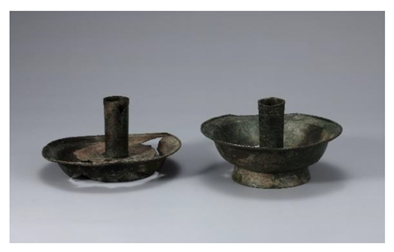 |
The bronze pŏns of the Koryǒ period were made for inserting big candles more than 15 cm in diameter. The characteristic vessel shape is a basin-shaped body with a wide flange at the mouth, a wheel-shaped base, and a nib for inserting candles inside. It is thought that the bronze pŏns were used for special rituals like the Mit'ahoe.
4. Restoration of the Mit'ahoe Held at the Pŏpch'ŏnsa Temple
A Mit'ahoe was held at the Pŏpch'ŏnsa temple in Muja years. The place where the Mit'ahoe held would be the Amitābha Hall or the Hall of Western Paradise. The Amitābha Triad would be enshrined in Amitābha Hall or related buildings. Monks who lived in the Pŏpch'ŏnsa temple prepared all the processes in order to hold the Mit'ahoe. This section recapitulates the Mit'ahoe in terms of where it was held, which Buddha and Bodhisattvas were enshrined, and what kind of offering utensils were used.
4.1. Amitābha Triad in the Amitābha Hall
The place where the Mit'ahoe were held would be the Amitābha Hall or related buildings like the Hall of Western Paradise or the Hall of Immeasurable Life. In general, the Amitābha Triad was enshrined in the Amitābha Hall. The Amitābha Triad represents Amitābha Buddha and his attendant Bodhisattvas, Avalokiteshvara on the right, and Mahasthamaprapta on the left. There are two types of Amitābha Triad iconographies, the triad composed of Amitābha Buddha, Avalokiteshvara, and Mahasthamaprapta, and the triad composed of Amitābha Buddha, Avalokiteshvara, and Ksitigarbha. However, the iconography of Amitābha Buddha, Avalokiteshvara, and Ksitigarbha seems to be shown coming to the 14th century (National Museum of Korea 2010). The Amitābha Triad of the Pŏpch'ŏnsa temple would be Amitābha Buddha and his attendant Bodhisattvas, Avalokiteshvara on the right and Mahasthamaprapta on the left. Now, the Amitābha Triad of the Pŏpch'ŏnsa temple does not remain; however, the Amitābha Triad of the Pŏpch'ŏnsa temple would be similar to this Amitābha Triad.
4.2. Arrangement of Bronze Offering Utensils
For the Mit'ahoe at the Pŏpch'ŏnsa temple, there were Amitābha Buddha, Avalokiteshvara, and Mahasthamaprapta placed on a lotus pedestal in the Amitābha Hall. In the center of the hall, there was table for arranging offering utensils. According to inscription of bronze offering utensils excavated at the Pŏpch'ŏnsa temple site, five monks including Shinhoe made 54 bronze offering utensils. Two bronze kwangmyŏngdaes, one bronze hyangwan, one bronze hyunlo, and one bronze pŏn were placed on the Buddhist altar in front of Amitābha Buddha. The same bronze offering utensils were placed on the altar in front of Avalokiteshvara and Mahasthamaprapta.
Figure 11 shows the arrangement of the bronze offering utensils placed in front of Amitābha Buddha.
5. The Manufacturing Time of the Bronze Offering Utensils with Inscription Muja Year
There is no certainty as to when the bronze offering utensils excavated at the Pŏpch'ŏnsa temple site were made based on the inscriptions engraved on them. However, there are three factors that reveal when they were made: the zodiac sign ‘Muja’, the Pŏpch'ŏnsa temple, and the Mit'ahoe. The zodiac sign ‘Muja’ is the time when these offering utensils were made. The Pŏpch'ŏnsa temple is where the Mit'ahoe was held.
Considering the duration of the Koryǒ period, the Muja years engraved on the bronze offering utensils excavated at the Pŏpch'ŏnsa temple site correspond to the years 928, 988, 1048, 1108, 1168, 1228, 1288, and 1348. However, it is necessary to narrow it down because of the entirety of the Koryǒ period is too broad a timeframe. To that end, it is necessary to examine the characteristics of the Pŏpch'ŏnsa temple during the Koryǒ period. The Pŏpch'ŏnsa temple, founded in 725, played an important role as a Pǒpsangjong (Dharma-character school) temple during the Koryǒ period. When Haerin 海麟 (984 - 1067) stayed at this temple, the Pŏpch'ŏnsa temple took on the appearance of a great temple.
The most important temple of Pǒpsangjong (Dharma-character school) was Hyǒnhwasa located in Kaesong during the early Koryǒ period, and other temples were the Haeansa temple, Chonhungsa temple, Sudasa temple, Wolaksa temple, and Pǒpchonsa temple. The Pǒpsangjong temples in the early Koryǒ period had a hierarchy. The temples where Seungtong (the highest position in the Gyo Order 敎宗) stayed were Hyǒnhwasa temple, Samchonsa temple, and Sokrisa temple. The temples where Sujwa (head of a meditation monk) stayed were Pŏpch'ŏnsa temple, Kayasa temple, Hongwonsa temple, and Sunggyosa temple. Considering the situation of the Pŏpch'ŏnsa temple, the Pŏpch'ŏnsa temple flourished the most in the middle 11th century during the stay of Haerin. After Haerin passed away, the Pŏpch'ŏnsa temple maintained the Pǒpsangjong. Afterward, the Buddhist Order of the Pŏpch'ŏnsa temple was changed, but the specific cause of this is unknown.
Various Buddhist Dharma Assemblies were held at the Pǒpsangjong temples during the Koryǒ period. Among them, the most important of the Dharma Assemblies is the Mit'ahoe. Although there are few records related to the the Mit'ahoe, it can be confirmed through related materials that the Mit'ahoe was held at the Hyǒnhwasa temple and the Pǒpchonsa temple in the early Goryeo period. The record of the Hyǒnhwasa temple Monument is the oldest record related to the Mit'ahoe of the Koryǒ period. The purpose of holding the Mit'ahoe is clearly stated in the Hyǒnhwasa temple Monument as being to pray for the repose of King Hyonjong’s parents’ souls, but the process of the Mit'ahoe is not stated. Another record about the Mit'ahoe can be found in the inscription on the bronze offering utensils excavated at the Pŏpch'ŏnsa temple site. According to the inscription on the bronze hyŏnlo excavated at the Pŏpch'ŏnsa temple site, in February of the Muja year, five monks, including Shinhoe 信懷, made three bronze hyŏnlos for Amitābha Dharma Assembly held in the Pŏpch'ŏnsa temple. However, the purpose and procedure of the Mit'ahoe were not mentioned in the inscription.
The Hyǒnhwasa temple and the Pǒpchonsa temple belonged to the Pǒpsangjong and the Amitābha Dharma Assembly, the Mit'ahoe was only held at these two temples. So the Mit'ahoe was held at the Pǒpsangjong temples during the early Koryǒ period. Considering this situation, the bronze offering utensils made in Muja years may have been made in 1168 or 1228. However, the Buddhist Order of the Pŏpch'ŏnsa temple was changed after the military coup d’etat in 1170. Thus, the bronze offering utensils excavated at the Pŏpch'ŏnsa temple site are presumed to have been made in 1168.
6. Conclusions
The bronze offering utensils excavated at the Pŏpch'ŏnsa temple site were made for use in the Mit'ahoe in Muja year. In preparation for the Mit'ahoe, five monks made these bronze offering utensils during February and March in Muja year. They made forty-five kwangmyeongdaes, three hyangwans, three hyunlos, and three pŏns.
A bronze hyunlo, of which only the body remains, shows characteristics of a vessel of the Koryǒ period. According to inscription, this hyunlo was made for the Mit'ahoe held at the Pŏpch'ŏnsa temple. Three hyunlos would be placed in front of Amitābha Buddha, Avalokitesvara, and Mahasibamaprata. The bronze hyangwan excavated at the Pŏpch'ŏnsa temple site is composed of a circular base, flared shaft, and cylindrical body with a wide flange at the mouth. In addition, the extruded line and the intaglio line are expressed on the body and the flared shaft. According to the inscription engraved on the side of the circular base, this bronze hyangwan was made to be enshrined in front of the Amitābha Triad. The bronze pŏn is a kind of lighting utensil that is similar to candlesticks of the Koryǒ period. The bronze pŏn is a large candle with a diameter of more than 15 cm. Three pŏns and three hyunlos would be placed in front of the Amitābha Triad.
It is possible that the bronze offering utensils made in a Muja year were made in 1168. The Buddhist Order of the Pŏpch'ŏnsa temple was changed after the military coupd’etat in 1170. Thus, the bronze offering utensils excavated at the Pŏpch'ŏnsa temple site are presumed to be made in 1168. The bronze offering utensils made in Muja year have a relation to offering incense and light. In general, the basic composition of offering utensils is one incense burner and two candlesticks. As the bronze offering utensils for the Mit'ahoe of the Pŏpch'ŏnsa follow the basic composition, but the vase did not seem to be used as an offering utensil at that time.
The bronze offering utensils excavated at the Pŏpch'ŏnsa temple site give a lot of information about the Mit'ahoe of the Pŏpch'ŏnsa temple held in 1168. We can know what kinds of offering utensil were used, how many offering utensils were made, and which Buddha and Bodhisattvas were enshrined.
Funding
This research received no external funding.
Data Availability Statement
Not applicable.
Conflicts of Interest
The author declares no conflict of interest.
Notes
| 1 |
Yongjaech'onghwa is a collection of miscellaneous writings by Sŏng Hyŏn (1439-1504). The book is a comprehensive record, from Koryǒ through King Seongjong’s reign in Chosŏn, of writers, calligraphers, painters and musicians; of capitals, war, ceramics, epitaphs, and typeface; of the administrative system in early Chosŏn including state examinations, Sŭngjŏngwŏn (Royal Secretariat), Yejo (Ministry of Rites), and Chiphyŏnchŏn (Hall of Worthies); of court events like the Ch'ŏyong dance, fireworks, or ghost-repelling ritual; and of wedding rituals, initiation rites, seasonal customs, birth rituals, and Buddhist rituals. The book contains a large number of anecdotes about distinctive characters, both literati and commoners. There are many writings on poetry as well, including brief critical commentaries on past Korean poetry and also on specific individual passages. There are also personal family anecdotes, along with proverbs and ancient sayings, legends, and biographies. Natural phenomena are also observed, including metamorphosis, tidal flow, pheasant meat, similar objects, the color of red bean blossoms, frogs croaking, and the color of the tail of a stork. This vast book serves as an important reference for studying the society, folklore, and literature of Chosŏn. |
| 2 |
The original text is follows: 成俔, 『慵齋叢話』卷8, “我國崇奉佛敎久矣 新羅古都招提多於閭閻 松都亦然王宮甲第皆與佛宇相連王與後宮詣寺燒香無虛月. |
| 3 |
The Pŏpch'ŏnsa temple was founded in 725; remodeling continued during the Koryǒ period. It was a famous temple in Pǒpsangjong (the consciousness-only school of Buddhism). State Preceptor Jigwang, with the patronage of the royal court, returned to the Pŏpch'ŏnsa temple upon retirement. The temple thrived but was totally destroyed during the Japanese Invasion of Korea in 1592. The four excavations from 2001 to 2004 revealed 19 building sites whose dates span the Unified Silla up to Joseon, three well sites, and the remains of stone embankments, walls, and stairs as well as relics such as gilt-bronze standing Buddha and a lotus pedestal including all kinds of roof tiles and ceramics. Thus, the temple site is important in the study of the history of Korean Buddhism. |
| 4 |
Pǒpsangjong (the consciousness-only school of Buddhism) is the common name for a stream of thought that represented the Indian Yogācāra system of thought in East Asia. |
| 5 |
The Hyǒnhwasa temple was founded in 1018 by King Hyǒnjong as a merit cloister to cherish the souls of his dead parents. The Hyǒnhwasa temple featured a hall enshrined with a portrait of a deceased member of the royal family. |
| 6 |
The original text is follows: 李穡, 「報法寺記」 『東文選』卷75記, “乃設落成初會, 歲庚戌, 落中會, 歲丁巳, 邀曹溪禪師, 行備主席, 歲戊午, 始作萬日彌陁會. Finally, the first completed Dharma Assembly was held in the Kyŏngsul year, and the second completed Dharma Assembly was held in the Chŏngsa year. In the Muo year, the Sŏnjong Master Haengbi was welcomed and Mit'ahoe's was held at Pobŏpsa. |
| 7 |
Hwang Sooyoung, Koryŏ chaemyŏng hyangwanŭi shillye ijwa, Kogomisul 88, 1966, p. 351; ‘戊子二月日 法泉寺 弥陀會 懸爐 三都卜七斤七兩 信懷木五人造納.’ |
| 8 |
Committee for the Compilation of the Anthology of Hwang Sooyoung, 1999, p. 456; 戊子二月日 弥陁前香垸三都卜十一斤信懷木五人次知造納 |
| 9 |
Committee for the Compilation of the Anthology of Hwang Sooyoung, 1999, p. 455; “戊子二月日 法泉寺彌陀前光明臺二十二內大三棟梁信懷惠堅則岡景申里文木次知造納都重八十四斤三兩” |
| 10 |
Heo, Heungsik, ed. Epigraphs of Korea: Goryeo Dynasty (韓國金石全文-中世 下). Vol. 2. Seoul: Asea munhwasa, p. 1267. “戊子二月日 彌陀前廾三內三 信懷木五人次知造納都重七十二斤八兩” |
| 11 |
Heo, Heungsik, ed. Epigraphs of Korea: Goryeo Dynasty (韓國金石全文-中世 下). Vol. 2. Seoul: Asea munhwasa, p. 1268. “戊子三月日 法泉寺彌陀前燔城三入卜一斤十二兩 信懷朩五人造成” |
| 12 |
徐兢, 『宣和奉使高麗圖經』卷28 供張1, 光明臺, 檠燈燭之具也. 下有三足. 中立一幹, 形狀如竹. 逐節相承, 上有一盤. 中置一甌, 甌中有可以然燭. 若然燈則易以銅釭, 貯油立炬. 鎭以小白石, 而絳紗籠之. 高四尺五寸, 盤面. 闊一尺五寸, 罩高六寸, 闊五寸 |
References
-
Primary Sources .
- Abhiniṣkramaṇa Sūtra (佛本行集經, Sūtra of the Collection of the Original Acts of the Buddha). T. 3, no. 190.
- Damamūka-nidāna Sūtra (賢愚經, Sūtra of the Wise and the Foolish). T. 4, no. 202.
- Ekottara Āgama (增壹阿含經, Numbered Discourses). T. 2, no. 125.
- Gaolitujing (高麗圖經).
- Mahāprajñāpāramitā Sūtra (大般若波羅密多經, Large Perfection of Wisdom Sūtra). T. 5-7, no. 220.
- Samādhi Sea Sūtra (佛說觀佛三昧海經, Sūtra on the Samadhi-Ocean of Contemplation of the Buddha). T. 15, no. 643.
- Suvarṇaprabhāsa Sūtra (金光明經, Sūtra of Golden Light). T. 16, no. 663.
- Tongmunseon (東文選, Anthology of Korean Literature).
- Vinaya (鼻奈耶).
- Vinaya Sūtra of Guṇaprabha (佛說德光太子經). T. 3, no. Vinaya Sūtra of Guṇaprabha (佛說德光太子經). T. 3, no. 170.
- Sǒng Hyǒn, Yongjaech'onghwa.
- Vermeersch, Sem, A Chinese Traveler in Medieval Korea- Xu Jing’s Illustrated Account of the XuaEmbassybasy to Koryǒ. University of Hawaii Secondary Sources, 2016.
-
Secondary Sources .
- Committee for the Compilation of the Anthology of Hwang Sooyoung (황수영전집간행위원회, Journal of Conservation Science (金石遺文) Vol. 4, Anthology of Hwang Sooyoung (황수영전집). Hyean, 1999.
- Gyenonju National Research Institute of Cultural Heritage, Bulyi: Dulianinhana, 2021.
- National Museum of Korea, Koryŏshidae hyangno (Incense Burners of Koryǒ Dynasty), 2013.
- National Museum of Korea, Koryŏbulhwadaejon (Masterpieces of Goryeo Buddhist Painting), 2010.
- Kyunghee University Museum, Catalog of the Kyunghee University Museum. Seoul: Kyunghee University Museum. 1986.
- Choi, Eungchon ∙ Kim Yonsu, Kumsokgongye, Sol, 2003.
- Heo, Heungsik (허흥식) ed, Epigraphs of Korea: Goryeo Dynasty (韓國金石全文-中世 下). Vol. 2, Asea munhwasa, 1984.
- ____________________. 1986. Study of Buddhism of the Goryeo Dynasty, (高麗佛敎史硏究), Ilchogak. 1986.
- Hwang Sooyoung, Koryŏ chaemyŏng hyangwanŭi shillye ijwa, Kogomisul 88, 1966.
- Lee, Yongjin, ‘Koryŏshidae ch'ŏngdongŭnipsahyangwanŭi pŏmja haesŏk (A Study on Sanskrit Characters on Silver-inlaid Incense Burners of the Koryǒ Dynasty), Yŏksaminsok'ak 36, 2011.
- Lee, Yongjin, Pŏpch'ŏnsaji chulto mujamyong bulgyogongyepum yongu (A Study on the Buddhist Metal Works with Inscription Muja excavated at Pŏpch'ŏnsa Temple Site), Bulgyomisul 23, 2012.
- Jeong Seungeun, Goryeosidae Hyunlo yongu, master’s thesis, Dongguk University, 2018.
- Jo Hyuni, Goryeosidae Dengchokgui yoohyeonggwa ttekkjing (Study on Types and Characteristics of Lamp and Candlestick in Goryeo dynasty), Dongyanamisulsahak, 7, 2018.
Figure 1.
Rubbing of Hyǒnhwasa temple Monument. ⓒ National Museum of Korea.
Figure 1.
Rubbing of Hyǒnhwasa temple Monument. ⓒ National Museum of Korea.
Figure 2.
View of the Pŏpch'ŏnsa temple site. ⓒ Cultural Heritage Administration.
Figure 2.
View of the Pŏpch'ŏnsa temple site. ⓒ Cultural Heritage Administration.
Figure 3.
Bronze hanging incense burner with inscription Muja year, excavated at the Pŏpch'ŏnsa temple. H 17.0㎝, Dongguk University Museum. ⓒ Dongguk University Museum
Figure 3.
Bronze hanging incense burner with inscription Muja year, excavated at the Pŏpch'ŏnsa temple. H 17.0㎝, Dongguk University Museum. ⓒ Dongguk University Museum
Figure 4.
Bronze hyŏnlo excavated at the Sanoesa temple site. H 35.0㎝, Chǒngju National Museum. ⓒ Chǒngju National Museum
Figure 4.
Bronze hyŏnlo excavated at the Sanoesa temple site. H 35.0㎝, Chǒngju National Museum. ⓒ Chǒngju National Museum
Figure 5.
Bronze hyŏnlo, H 17.0㎝, Kyunghee University Museum. ⓒ Kyunghee University Museum
Figure 5.
Bronze hyŏnlo, H 17.0㎝, Kyunghee University Museum. ⓒ Kyunghee University Museum
Figure 6.
Bronze hyangwan with inscription Muja year excavated at the Pŏpch'ŏnsa temple site, H 25.0㎝, National Museum of Korea. ⓒ National Museum of Korea.
Figure 6.
Bronze hyangwan with inscription Muja year excavated at the Pŏpch'ŏnsa temple site, H 25.0㎝, National Museum of Korea. ⓒ National Museum of Korea.
Figure 7.
Small bronze kwangmyŏngdae with inscription Muja year excavated at the Pŏpch'ŏnsa. temple site, H 37.0㎝, Dongguk University Museum. ⓒ Dongguk University Museum
Figure 7.
Small bronze kwangmyŏngdae with inscription Muja year excavated at the Pŏpch'ŏnsa. temple site, H 37.0㎝, Dongguk University Museum. ⓒ Dongguk University Museum
Figure 8.
Big bronze kwangmyŏngdae with inscription Muja year excavated at the Pŏpch'ŏnsa temple site, H 50.7㎝, Handok Museum. ⓒ Handok Museum
Figure 8.
Big bronze kwangmyŏngdae with inscription Muja year excavated at the Pŏpch'ŏnsa temple site, H 50.7㎝, Handok Museum. ⓒ Handok Museum
Figure 9.
Bronze kwangmyŏngdae excavated at the Inwang-dong temple site, H 35.0㎝, Gyeongju National Research Institute of Cultural Heritage. ⓒ Gyeongju National Research Institute of Cultural Heritage
Figure 9.
Bronze kwangmyŏngdae excavated at the Inwang-dong temple site, H 35.0㎝, Gyeongju National Research Institute of Cultural Heritage. ⓒ Gyeongju National Research Institute of Cultural Heritage
Figure 10.
Bronze pŏn with inscription Muja year excavated at the Pŏpch'ŏnsa temple site, H 7-7.6㎝, D 18-18.4㎝, Yŏngnam University Museum ⓒ Yŏngnam University Museum.
Figure 10.
Bronze pŏn with inscription Muja year excavated at the Pŏpch'ŏnsa temple site, H 7-7.6㎝, D 18-18.4㎝, Yŏngnam University Museum ⓒ Yŏngnam University Museum.
Figure 11.
Restoration of bronze offering utensils used for the Mitahoe held at the Pŏpch'ŏnsa temple.
Figure 11.
Restoration of bronze offering utensils used for the Mitahoe held at the Pŏpch'ŏnsa temple.
|
Disclaimer/Publisher’s Note: The statements, opinions and data contained in all publications are solely those of the individual author(s) and contributor(s) and not of MDPI and/or the editor(s). MDPI and/or the editor(s) disclaim responsibility for any injury to people or property resulting from any ideas, methods, instructions or products referred to in the content. |
© 2023 by the authors. Licensee MDPI, Basel, Switzerland. This article is an open access article distributed under the terms and conditions of the Creative Commons Attribution (CC BY) license (http://creativecommons.org/licenses/by/4.0/).
